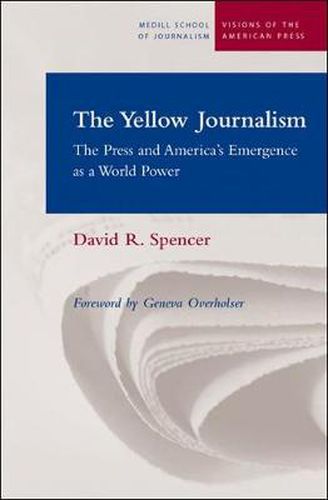Readings Newsletter
Become a Readings Member to make your shopping experience even easier.
Sign in or sign up for free!
You’re not far away from qualifying for FREE standard shipping within Australia
You’ve qualified for FREE standard shipping within Australia
The cart is loading…






When a case containing dismembered human remains surfaced in New York’s East River in June of 1897, the publisher of the
New York Journal
- a young, devil-may-care millionaire named William Randolph Hearst - decided that his newspaper would
scoop
the city’s police department by solving this heinous crime. Pulling out all the stops, Hearst launched more than a journalistic murder investigation; his newspaper’s active intervention in the city’s daily life, especially its underside, marked the birth of the Yellow Press. In a work that studies the rise and fall of this phenomenon, David R. Spencer documents the fierce competition that characterized yellow journalism, the social realities and trends that contributed to its success (and its ultimate demise), its accomplishments for good or ill, and its long-term legacy. Most notable among Hearst’s competitors was New York City’s
The World , owned and managed by a European Jewish immigrant named Joseph Pulitzer.
The Yellow Journalism
describes how these two papers and others exploited the scandal, corruption, and crime among the city’s most influential citizens, and its most desperate inhabitants - a policy that made this
journalism of action
remarkably effective, not just as a commercial force, but also as an advocate for the city’s poor and defenseless. Spencer shows how many of the innovations first introduced during this period - from investigative reporting to the use of color, entertainment news, and cartoons in papers - have had a lasting effect on journalism; and how media in our day reflects the Yellow Press’s influence, but also its threatened irrelevance within the broader realities of contemporary society.
$9.00 standard shipping within Australia
FREE standard shipping within Australia for orders over $100.00
Express & International shipping calculated at checkout
When a case containing dismembered human remains surfaced in New York’s East River in June of 1897, the publisher of the
New York Journal
- a young, devil-may-care millionaire named William Randolph Hearst - decided that his newspaper would
scoop
the city’s police department by solving this heinous crime. Pulling out all the stops, Hearst launched more than a journalistic murder investigation; his newspaper’s active intervention in the city’s daily life, especially its underside, marked the birth of the Yellow Press. In a work that studies the rise and fall of this phenomenon, David R. Spencer documents the fierce competition that characterized yellow journalism, the social realities and trends that contributed to its success (and its ultimate demise), its accomplishments for good or ill, and its long-term legacy. Most notable among Hearst’s competitors was New York City’s
The World , owned and managed by a European Jewish immigrant named Joseph Pulitzer.
The Yellow Journalism
describes how these two papers and others exploited the scandal, corruption, and crime among the city’s most influential citizens, and its most desperate inhabitants - a policy that made this
journalism of action
remarkably effective, not just as a commercial force, but also as an advocate for the city’s poor and defenseless. Spencer shows how many of the innovations first introduced during this period - from investigative reporting to the use of color, entertainment news, and cartoons in papers - have had a lasting effect on journalism; and how media in our day reflects the Yellow Press’s influence, but also its threatened irrelevance within the broader realities of contemporary society.